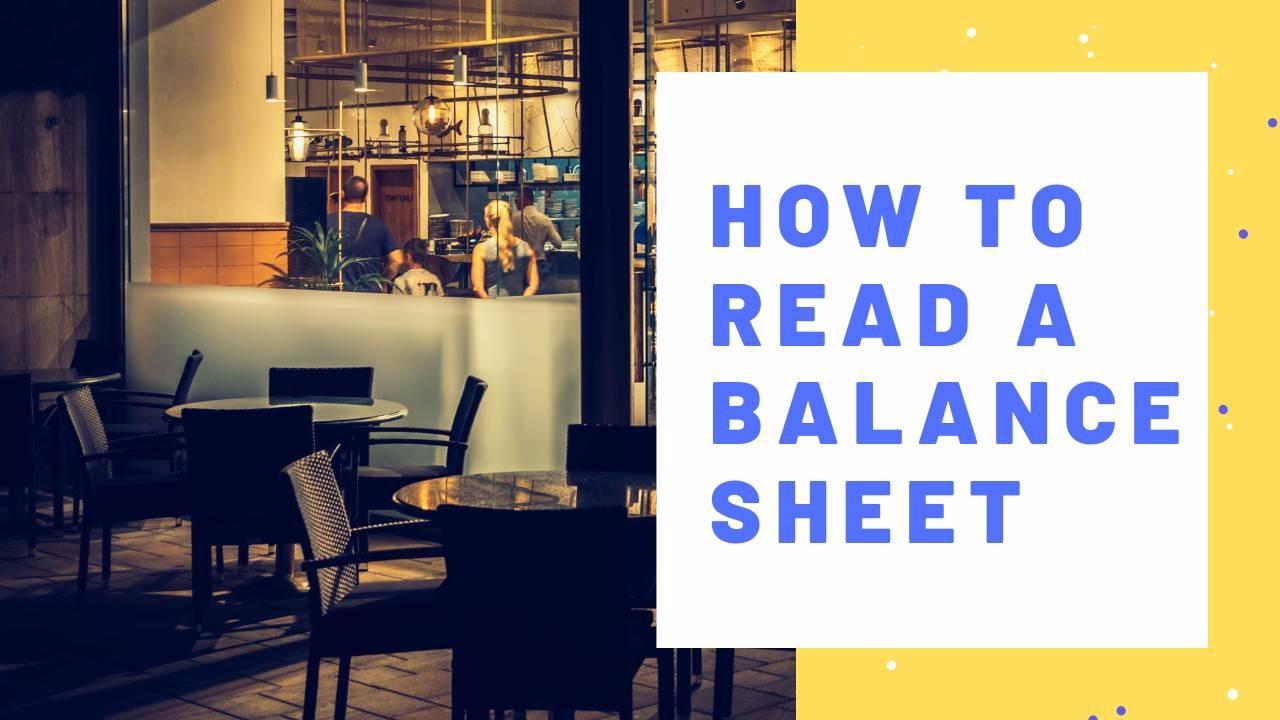Why Is a Restaurant Balance Sheet Important
Sep 18, 2019
Do you wonder what a restaurant balance sheet is for? Or better yet, how do you read a restaurant balance sheet? Watch this video, or continue reading below, to learn the answers to these questions and more.
The balance sheet is a tool that shows you the health of your business. The simplest way to think about a balance sheet is like this: take your digital camera out and take a picture of your business. Print out the photo on your printer immediately. What you will see is a snapshot in time, showing what assets you have and who owns them.
How to Read a Restaurant Balance Sheet
One side of the balance sheet shows the assets of the restaurant. These assets are in the order in which they can most easily be liquidated. For instance, cash can be taken out of the bank today, but a building will take months or sometimes years to sell. The other side of a balance sheet shows the liabilities of the restaurant and to whom they are owed, or if they are a part of the owner’s equity. The golden rule to a balance sheet is that it must do exactly that: balance. The total liabilities must equal the total assets. In general you can think of a balance sheet as a document that shows the stuff you have and who owns that stuff.
You have:
Current Assets - what you're going to use in the next 12 months. Cash in the drawer, cash in the bank, food on the shelves.
Fixed Assets - what you use over and over again. You furniture, fixtures, equipment.
Other Assets - things that don't fit in those other two categories, such as your liquor license.
Current Liabilities - what you have to pay in the next 12 months. Your power bill, your
Long-term Liabilities - what are the things you pay over and over again, such as a loan on your building.
Owner's Equity - the part and profitability of the business that's yours, what you own. This is what shows you what you've made or lost over the years.
What do you do with all of this? These numbers come together in one really important calculation called your current ratio.
Current Ratio = Current Assets/Current Liabilities
That should give you a ratio of at least 1:1 - one dollar in current assets to pay one dollar in current liabilities.
Ideally, you'd have a little more in assets to pay liabilities. I like to aim for 1.25:1. Sometimes you might have a reversed ratio - .90 for every dollar you owe. That's a cash flow issue.
Doing this calculation and knowing how to read and use the information in your restaurant balance sheet shows you the financial health of your restaurant right now.
If you'd like to learn what successful restaurant owners know about accounting, download our free report, "How to Avoid the 5 Pitfalls of Restaurant Accounting." Or watch this webinar on The Largo Group's own restaurant industry expert David Scott Peters' YouTube channel.
Stay connected with news and updates!
Join our mailing list to receive the latest news and updates from our team.
Don't worry, your information will not be shared.
We hate SPAM. We will never sell your information, for any reason.
